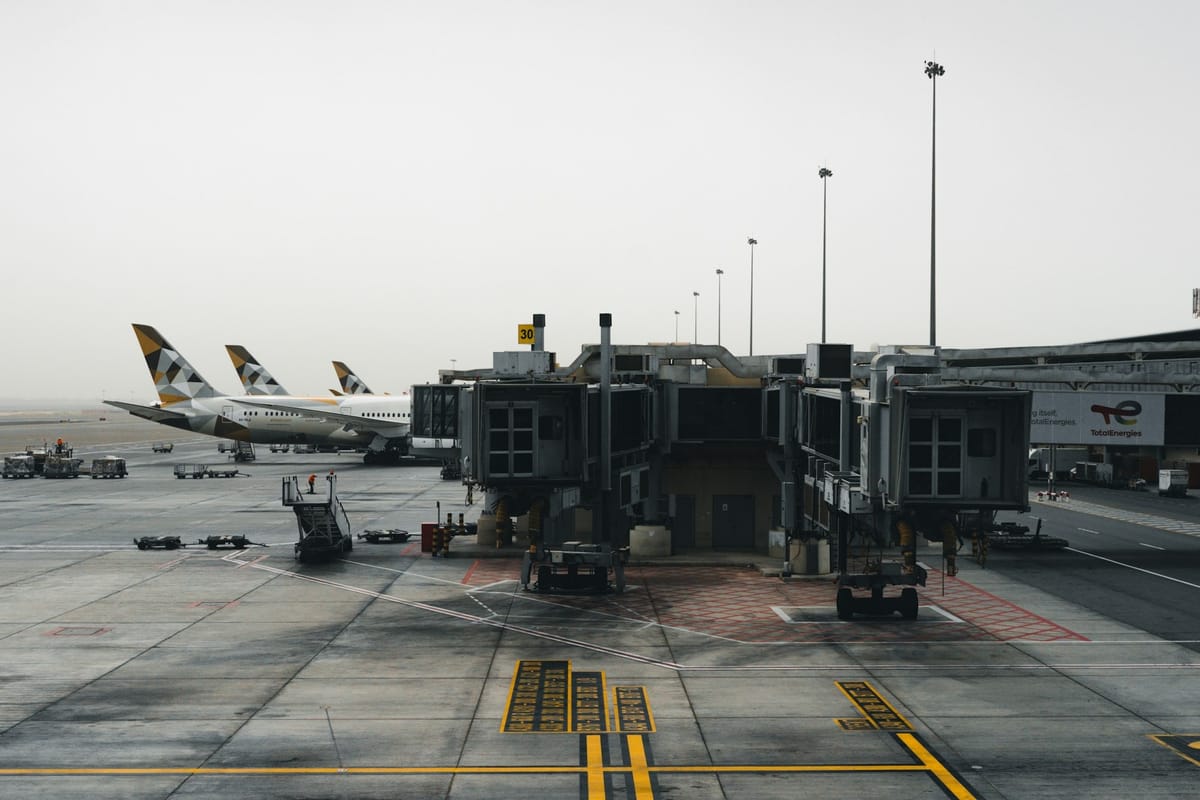UPS Cargo Plane Crash, FAA Flight Cuts, New AI Safety Standards Announced

TL;DR
- UPS MD-11 cargo plane crash at Louisville, Kentucky: 12 fatalities as engine separates and fire ensues.
- FAA orders 10% reduction of flights at 40 high‑volume airports amid government shutdown, citing air traffic controller staffing shortage.
- New U.S. certification guidelines released for AI/ML systems in aviation to ensure safety, integrating ARP4754 and ARP6983 standards.
Louisville MD‑11 Crash Exposes the Peril of Aging Cargo Freighters
Engine separation proves deadly
On 4 Nov 2025 a left‑hand CF6‑6/7 engine detached from a UPS MD‑11F during take‑off roll, causing an abrupt left roll and ground impact. The failure mirrors the uncontained engine loss that downed United 232 in 1989, indicating that the engine‑pylon interface of the MD‑11 remains a structural weak point despite decades of service.
Fuel load transformed wreckage into inferno
The aircraft carried roughly 38 000 gal (144 000 L) of jet fuel. The post‑impact fire engulfed a half‑mile debris field and ignited neighboring petroleum‑recycling and auto‑parts facilities. Authorities imposed a five‑mile shelter‑in‑place radius, and secondary injuries resulted from the rapidly spreading blaze.
Aging fleet amplifies risk
The MD‑11 in question, built in 1991, was 34 years old; the UPS MD‑11 fleet averages over 30 years. NTSB investigations repeatedly flag fatigue, corrosion, and component life‑limit exceedances in legacy wide‑bodies. Operating such aircraft in high‑frequency cargo hubs heightens the probability of catastrophic events.
Logistics cascade from a single failure
- 300 daily UPS flights suspended
- Processing capacity of 400 000 packages per hour offline
- Overall disruption rippled through the global supply chain
Regulators and operators must act
- Anticipated Airworthiness Directive for ultrasonic inspection of MD‑11 engine pylons and fire‑proofing
- Accelerated retirement of MD‑11s in favor of newer 777F/787F freighters
- Stricter on‑site fire‑suppression requirements at fuel‑intensive cargo airports
- Adoption of real‑time vibration and temperature monitoring with AI‑driven anomaly detection
When an aging freighter loses an engine, the consequences extend far beyond the wreckage. The Louisville accident should prompt immediate regulatory scrutiny and a strategic shift toward newer aircraft, ensuring that the logistics network does not hinge on platforms whose design limits were established decades ago.
FAA’s 10 % Flight Cut: A Data‑Driven Wake‑Up Call for Aviation
Why the Cut Matters
- Daily FAA‑controlled flights hover around 44,000 – 44,500; a 10 % reduction removes roughly 4,400 slots.
- Over 1.2 million passenger seats face cancellation or delay across 40 high‑volume markets.
- The action responds to a staffing shortfall of 3,000 – 4,000 certified controllers, compounded by a government shutdown that began Oct 1, 2025.
Numbers Behind the Decision
- Facilities operating with limited staffing rose from an average of 8.3 pre‑shutdown to 39 by Nov 5.
- Controller absenteeism peaked at 20 % – 40 % during the first shutdown week; later reports show a steadier 10 % – 15 % no‑show rate.
- Mandatory overtime reaches six days per week, surpassing FAA fatigue thresholds (Policy 2120‑14‑20).
- Seat‑loss estimates for Chicago O’Hare alone total ≈14,500 seats (≈1,800 flights).
Airlines Feel the Pinch
- Southwest, Delta, United, and American are re‑booking affected passengers and lobbying Congress for a shutdown end.
- Combined projected revenue loss exceeds $2 billion if the reduction persists through the holiday travel period.
- Operational planning accelerated within 48 hours of the FAA’s Nov 5 announcement, illustrating industry agility under pressure.
Safety Over Speed
- FAA Administrator Bryan Bedford framed the cut as “pre‑emptive to avoid a crisis,” prioritizing safety amid fatigue‑related risk spikes.
- No safety incidents have been directly linked to the reduction, but elevated fatigue risk remains a concern per FAA safety matrices.
- Remote‑tower technology, modeled after Norway’s Bodø system, is cited as a potential mitigation path, though no immediate U.S. deployment is scheduled.
Looking Ahead
- If the shutdown extends beyond 30 days, the FAA may fast‑track remote‑tower contracts for at least five major terminals by Q1 2026.
- Persistent staffing gaps could trigger additional 5 % capacity cuts, pushing total annual flight reductions toward 12 % – 15 % across the affected markets.
- Economic impact projections rise to $3 – 4 billion, underscoring the urgency of resolving the controller shortage.
U.S. Certification Guidelines Anchor AI/ML Aviation to Proven Safety Framework
Core Elements of the Guidance
- System Development Process – Extends ARP 4754 V‑model, allocating requirements to ML items and requiring functional hazard analysis and system safety assessment.
- ML‑Specific Assurance – Enforces a “Frozen‑Model” rule (ARP 6983/ED‑324); only supervised‑learning models with immutable weights may be released, with full dataset traceability and post‑training validation.
- Software Assurance – Treats the inference engine as software of the same Design Assurance Level (DAL) under DO‑178C/SC‑220, demanding code reviews, MC/DC coverage for the inference path, and runtime monitoring for out‑of‑distribution inputs.
- Hardware Assurance – Applies DAG‑AH criteria, ensuring hardware platforms meet established environmental and failure‑rate standards.
- Safety‑Trip Integration – Requires safety‑trip logic to remain active irrespective of AI mode, with a mandatory fallback‑to‑human path for all DAL‑A functions.
- Documentation & Traceability – Calls for a system‑level Safety Assessment Report that incorporates a “Model Safety Case,” hazard mitigations, and validation results.
Emerging Data‑Driven Patterns
- Industry consensus favors supervised, frozen models; reinforcement or online learning remains outside certification scope.
- Existing hazard identification, functional allocation, and DAL assignment processes are directly mapped onto AI/ML components, preserving legacy safety rigor.
- Safety‑trip continuity is codified across all AI/ML certifications, reflecting outcomes from the X‑62A VISTA flight‑test program (Sept 2023).
- Model‑Specific Inspection (MSI) is accepted conditionally, opening a pathway for formal verification tools when approved by regulators.
- Validation metrics now require labeled training data, statistical performance bounds, and explicit out‑of‑distribution detection thresholds.
Operational Impact
- Certification pathways for AI‑enabled flight control systems become deterministic, accelerating integration of autonomous functions into new aircraft programs.
- Regulators gain a clear framework for evaluating AI/ML safety cases, reducing reliance on ad‑hoc assessment methods.
- Mandatory runtime monitoring and unchanged safety‑trip logic create a safety net that aligns AI behavior with established aircraft fail‑safe philosophies.
- Conditional acceptance of MSI encourages development of formal verification suites, potentially reducing test effort for DAL‑A neural‑network functions.
- The “frozen‑model” requirement establishes a baseline for future extensions toward limited dynamic learning in non‑critical advisory roles.
Chronology of Key Milestones
- Sept 2023 – X‑62A VISTA demonstrates AI‑controlled flight while preserving safety‑trip logic.
- 2024‑2025 – Development of ARP 6983 by SAE/EUROCAE G‑34/WG‑114; alignment with RTCA SC‑220.
- 5 Nov 2025 – Release of U.S. certification guidelines (The Air Current special report).
- Future – Anticipated refinements to address limited reinforcement‑learning use cases and post‑certification monitoring.



Comments ()